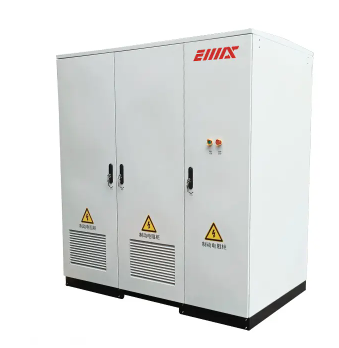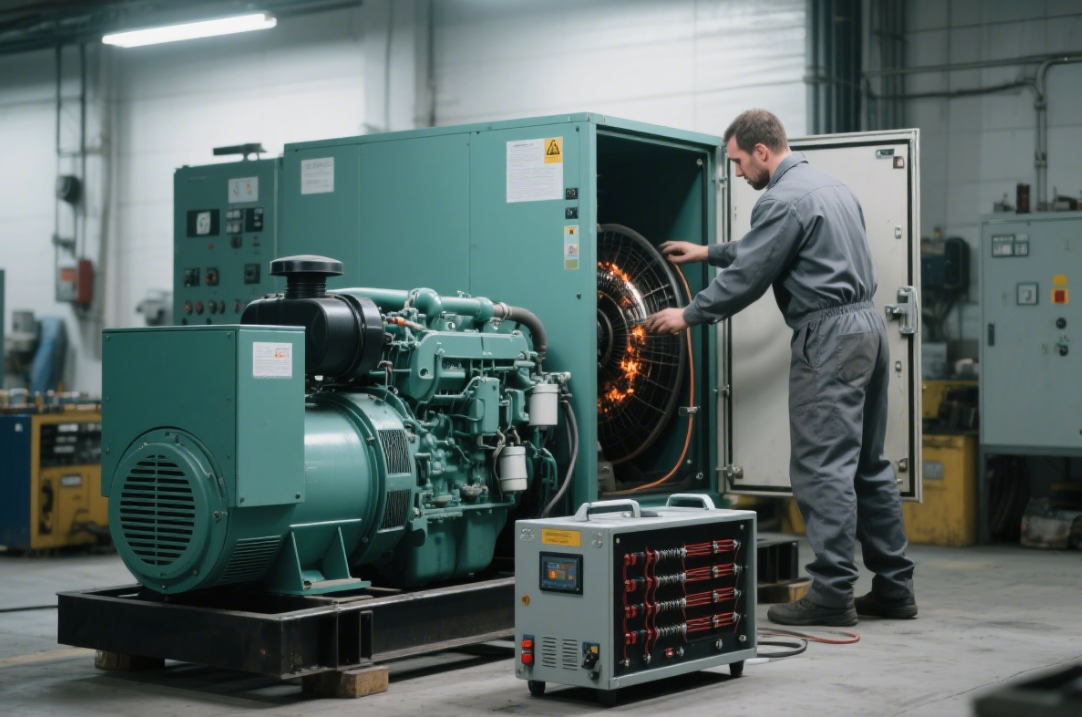- All
- Product Name
- Product Keyword
- Product Model
- Product Summary
- Product Description
- Multi Field Search
Views: 0 Author: Site Editor Publish Time: 2025-06-26 Origin: Site








Welcome to our in-depth exploration of load banks! If you’ve ever wondered about the differences between inductive and resistive load banks, you’re in the right place. We’ll break down how each type works, their key features, and when to use them. Whether you’re a seasoned professional or just starting out, this guide will help you make informed decisions for your power system testing needs. Let’s dive in and discover the best solutions for your projects!
A load bank is a device used to simulate an electrical load, allowing equipment such as generators, UPS systems, or transformers to be tested under real-world conditions. It safely draws electrical power and converts it—often into heat—to mimic the demands placed on power sources during regular operation.
Key uses of load banks include:
Generator testing: Validates a generator’s full capacity and performance during commissioning or maintenance.
UPS (Uninterruptible Power Supply) maintenance: Confirms runtime, battery discharge rates, and transfer switch performance.
Electrical system commissioning: Ensures the integrity and load handling of newly installed or upgraded power infrastructure.
In simple terms, load banks allow engineers to test how systems perform under stress—before real emergencies strike.
A properly tested power source is a reliable one. Load banks simulate full-load conditions so engineers can assess whether a system will hold up when actual demand surges. This kind of preventive testing uncovers hidden faults before they turn into real failures.
Running a diesel generator without enough load causes unburned fuel to build up—known as wet stacking. It can damage the exhaust system and reduce engine efficiency. Load banks burn off this excess by applying the correct load, helping maintain clean combustion.
Routine maintenance often lacks real stress tests. Load banks provide repeatable, measurable load profiles. These simulate the exact electrical demands a system might face during emergencies or peak operations. That’s especially important when planning for:Load sharing between multiple generators; Power factor correction verification; Thermal imaging for hot-spot identification.
Resistive load banks simulate pure resistive loads, like lighting and heating. They have a power factor of 1.0 and convert all energy to heat. These load banks mimic real-world conditions where electrical energy is directly used for heating or lighting.
Resistive load banks use power resistors to convert electrical energy into heat. They rely on forced-air cooling to manage the heat generated during testing. These load banks are designed for easy operation and maintenance, making them a reliable choice for various applications.
Resistive load banks are used for generator full-load testing to ensure the generator can handle its maximum capacity. They are also used for rotary UPS testing and simulating heating and lighting systems. These applications help verify the reliability and efficiency of power systems under controlled conditions.

Inductive load banks simulate inductive loads, like motors and transformers. They have a power factor of 0.8, which is lagging. These load banks convert current into magnetic fields, introducing a phase lag between voltage and current. This simulates real-world conditions where equipment affects the power factor.
Inductive load banks contain iron-core reactors or coils. These components introduce a phase lag, making the current lag behind the voltage. This behavior represents the operational stress on power systems, providing a realistic test environment.
Inductive load banks are used for alternator performance testing, load-sharing simulations, and evaluating motor-driven systems. They help ensure that power systems can handle the stress of inductive loads, providing accurate and reliable test results.
To choose the right load bank, it’s important to understand how resistive and inductive units differ in their design and purpose.Resistive load banks are best suited for testing real power output. Inductive load banks, on the other hand, evaluate how systems manage reactive loads and lagging power factors.
Feature | Resistive Load Bank | Inductive Load Bank |
Power Factor | 1.0 (unity) | 0.8 (lagging) |
Load Type | Heating, lighting | Motors, transformers |
Energy Conversion | Electrical → Heat | Electrical → Magnetic Fields |
Testing Focus | Real power (kW) | Apparent power (kVA) |
Equipment Simulated | Simple resistive devices | Electromechanical/reactive devices |
Resistive loads draw current in phase with voltage. That creates a predictable, linear response. When load increases, current increases proportionally.Inductive loads introduce a delay—current lags behind voltage. This phase shift challenges voltage regulators, generator excitation systems, and load-sharing logic.
Key performance contrasts:
Sudden load changes:
Resistive banks adjust instantly with minimal system stress. Inductive loads can cause voltage dips or regulator oscillations.
Voltage-current phase angle:
In resistive loads, voltage and current rise and fall together. In inductive loads, current trails behind—testing dynamic response.
Behavior | Resistive Bank | Inductive Bank |
Voltage/Current Relationship | In-phase | Out-of-phase (lagging) |
System Impact | Minimal voltage impact | Can induce voltage fluctuation |
Load Stability | High | Varies with magnetic field buildup |
Resistive load banks are generally simpler and more economical. They use fewer specialized components and are easier to cool, inspect, and repair. Portable versions are widely available and ideal for field service. Inductive load banks are more complex and costly, due to heavy iron-core reactors and the need for more robust safety systems. Their physical footprint is larger, and transport is less convenient.
Category | Resistive Load Bank | Inductive Load Bank |
Initial Cost | Lower | Higher |
Weight & Size | Lighter, more compact | Heavier, larger footprint |
Cooling | Fan-cooled (forced air) | Minimal heat, but heavy coils |
Maintenance | Simple | Requires skilled service |
Setup Flexibility | High (plug-and-play) | Moderate (site-specific prep) |
Resistive load banks are widely used in testing systems where the load behaves linearly and current remains in phase with voltage. These are common in power sources that drive purely resistive equipment like heaters or incandescent lighting.
Typical applications include:
Single-generator full-load tests:Apply 100% rated load to verify real power output (kW) during commissioning or troubleshooting;
Regular generator maintenance: Simulate load under controlled conditions to burn off carbon deposits and avoid wet stacking;
Light to moderate industrial testing: Ideal for facilities with mainly heating or resistive process equipment.
Inductive load banks are best for systems where loads contain motors, coils, or transformers. These devices introduce reactive power and a phase angle shift, making inductive testing necessary to simulate real operational stress.
Best suited for:
Large-scale systems with motor loads: Evaluate generator and voltage regulator behavior under lagging power factor conditions;
Combined load and voltage regulation tests: Simulate both kW and kVAR to challenge excitation systems, especially during voltage sags or load surges;
Critical facility commissioning: Data centers, telecom, or hospitals must test how backup systems handle inductive loads under real-time switchover or transfer.
Understanding what each load bank cannot do helps prevent testing errors and equipment damage.
Resistive Load Bank Limitations:
Cannot simulate lagging power factor loads
Ineffective for motor-driven systems
Misses reactive power challenges faced by voltage regulators
Inductive Load Bank Limitations:
Cannot perform full kW testing alone
Heavier and more complex to deploy
Requires more careful safety management due to high magnetic field energy

A resistive/reactive load bank is an integrated system designed for comprehensive testing. It combines the functions of both resistive and inductive load banks to simulate real-world conditions more accurately. This type of load bank enables full-load generator testing at a power factor of 0.8, which is lagging. By incorporating both resistive and reactive elements, it provides a more complete picture of how a power system will perform under various loads.
Combination testing with resistive and reactive load banks offers several key advantages. It provides true kVA loading by combining kW and kVAR, ensuring that the generator is tested under conditions that closely mimic real-world operations. This results in better test fidelity and more accurate performance assessments.
Using a combined load bank is crucial for parallel generator setups and power factor correction. It allows for the evaluation of transient loads, load sharing, and alternator capacity. This type of testing is essential for ensuring that power systems can handle the stress of inductive loads, such as those created by motors and transformers.
Combining resistive and reactive load banks is particularly useful in industries where power systems are subjected to complex loads. For example, in data centers and telecommunications facilities, where reliability and efficiency are paramount, combination testing can help identify potential issues before they lead to downtime.
When choosing a combined load bank, consider the specific needs of your application. Ensure that the load bank can handle the required power factor and load levels. Regular maintenance and calibration of the load bank are also essential to ensure accurate and reliable testing results.
By using a combined load bank, you can achieve a more thorough and realistic assessment of your power system’s performance, helping to ensure its reliability and efficiency in real-world conditions.
A: You risk underloading the generator and missing critical performance issues like poor voltage regulation and inadequate excitation response.
A: Perform resistive load tests annually for maintenance. Use inductive or combined load tests during commissioning or major system upgrades.
A: No. They can’t simulate reactive loads or phase lag, which are essential for evaluating motor-driven equipment.
A: Yes. A resistive/reactive load bank combines both types for realistic full-load, 0.8 power factor testing.
A: Analyze your load profile. Choose resistive for heating/lighting loads, inductive for motor-heavy systems, or combined for mixed-use environments.
Understanding the difference between inductive and resistive load banks is crucial for effective power system testing. Resistive load banks simulate straightforward electrical loads, making them ideal for testing basic power systems, while inductive load banks handle complex loads, providing a more comprehensive test environment. For the most accurate and reliable results, consider using a combined resistive/reactive load bank, which offers a complete picture of how your power system will perform under real-world conditions. Whether you need a resistive, inductive, or combined load bank, Guangdong Emax Electrical Co., Ltd. offers a range of solutions tailored to meet your specific needs.